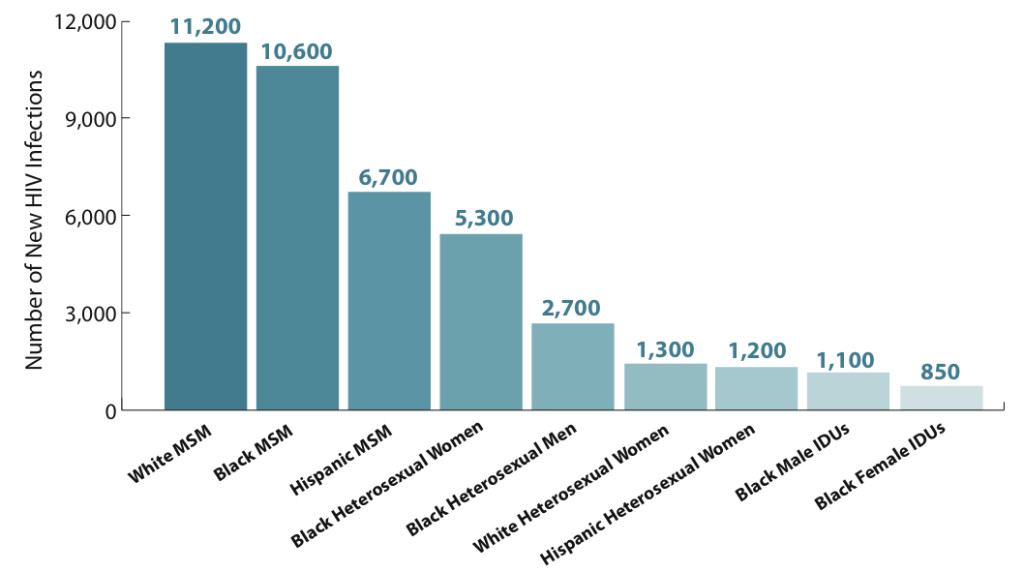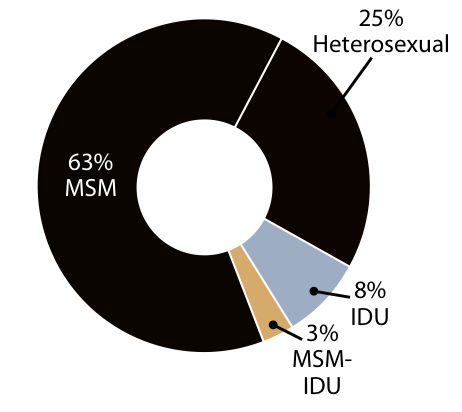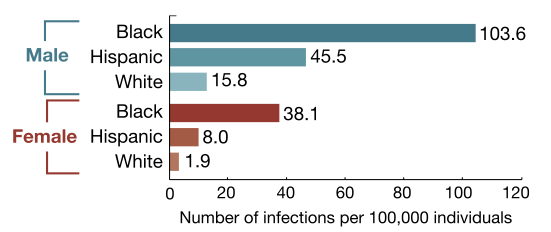An ongoing dialogue on HIV/AIDS, infectious diseases,
January 3rd, 2013
What’s a Fulyzaq? I Thought You’d Never Ask
As Physician’s First Watch noted, we sure know what the folks at the FDA were doing this holiday season — and most emphatically they weren’t visiting Aunt Selma in Boca Raton.
Nope, they were stuck in White Oak, Maryland, reviewing various new drug applications, with three of the four related to Infectious Disease. The FDA’s late 2012 actions:
- Approved use of oseltamivir (Tamiflu) in children as young as 2 weeks old.
- Approved the oral anticoagulant apixaban (Eliquis) to reduce risk of stroke for patients with atrial fibrillation not caused by valvular disease. (That’s the non-ID one — unless atrial fibrillation is caused by XMRV.)
- Approved bedaquiline (Sirturo) as part of combination therapy to treat multi-drug resistant tuberculosis. (This is is the first new TB drug approval in at least a thousand years. I’m exaggerating slightly.)
- Approved crofelemer (Fulyzaq) for diarrhea due to antiretroviral therapy.
For crofelemer, according to the FDA announcement, approval was based on the results of a phase III, double blind study comparing 125 mg of crofelemer twice daily to placebo in HIV patients with non-infectious diarrhea:
The trial was designed to measure clinical response, defined as the number of patients who had two or fewer watery bowel movements weekly. Results showed that 17.6 percent of patients taking crofelemer experienced clinical response compared with 8 percent taking placebo.
Further information on the drug — including its mechanism of action and nifty source, “the Croton lechleri plant, native to northwestern South America” — can be found on the company’s website.
I confess this approval took me by surprise. I was aware that crofelemer was in clinical trials, but hadn’t heard a peep about it at scientific meetings or other venues. Obviously some of this low profile is due to the fact that it’s not an antiretroviral agent, but compared with the attention given to tesamorelin, this is certainly a stealth approval.
Notably, current HIV medications are far less likely to cause diarrhea than the first generation of meds. The big offenders — ddI, full-dose ritonavir, nelfinavir, amprenavir, soft-gel saquinavir, even lopinavir/r — are today used either infrequently in the United States or not at all. (Several are not even available.) I assume that clinicians who have patients with ongoing diarrhea on any of these agents would switch antivirals first rather than starting a new medication for the side effect.
So who are the appropriate candidates for this drug? Even after switching off older HIV meds, some patients will continue to have diarrhea, either still due to the medications — most notably the PI’s with ritonavir — or from “HIV enteropathy”, which is damage the virus has done to the GI tract which in some people reverses very slowly, or not at all. For them, this approval gives them a welcome new option.
Plus, we get a sparkling new brand name to learn, and to make jokes about. This one’s a doozy — Fulyzaq!
So who came up with that? See above for an artistic rendition of a Fulyzaq in the wild.
January 1st, 2013
HIV Incidence: The Latest Numbers
The CDC has recently issued the latest report on HIV incidence (i.e., new infections) in the United States, and as always it’s fascinating to review the numbers.
To start, the year-by-year estimated incidence:
2007: 53,200
2008: 47,500
2009: 45,000
2010: 47,500 (38,000 men, 9,500 women)
Nope, not much change. Will data from HPTN 052 — published in the summer of 2011 — eventually have an impact? I think so, as the results strongly influenced both treatment guidelines and patients’ willingness to start therapy. A more pessimistic view is that the treatment-as-prevention message from 052 won’t have much of an effect, since data like these show that only a minority of people with HIV are actually on successful treatment. We’ll see.
This latest CDC report then highlights two important trends, one good news, one not-so-good:
The new analysis also finds two noteworthy trends among heavily affected populations: early signs of an encouraging decrease in new HIV infections among black women (21 percent decrease between 2008 and 2010), and a troubling and continuing increase in new infections among young gay and bisexual men (22 percent increase over the same time period).
In these days of fiscal cliff wrangling, I could use my taxpayer’s prerogative and show you a whole slew of figures — but these three really stand out as giving us a snapshot of who gets HIV in the United States these days:
1. Incidence in 2010 among various “risk groups” (MSM, men who have sex with men; IDUs, injection drug users):
2. Proportion of new infections by transmission category:
3. Rate of new infections by race, ethnicity, and sex:
The glass-half-full message is that HIV prevention efforts are clearly working, at least to some extent, as the prevalence of HIV — the number living with the virus — continues to increase, yet the incidence stays the same.
The half-empty view? The continued shift of the epidemic to younger MSM of color will make additional gains difficult, as this is a patient population that could be challenging to reach.
December 22nd, 2012
Chaos in the Diagnosis of C diff, and Dogs are Amazing Creatures
If you’re confused about the best way to diagnose C diff these days, welcome to the club. There are all kinds of tests out there, and no uniform approach between labs. Our lab actually does three tests — and will do a fourth (the classic cytotoxicity assay) if you request it.
The result? Chaos, confusion, and lots of queries.
For an example, here’s an email from a colleague:
Hey Paul — my patient had diarrhea after antibiotics, so I sent a C diff. Not sure what to tell her about the result, which I’ve pasted below. (She’s better now by the way with no treatment.)
AudreySpecimen Type: STOOL
C. DIFFICILE ANTIGEN/TOXIN ASSAY – Final
ANTIGEN:POSITIVE; TOXIN:NEGATIVE
RESULTS PENDING PCR ANALYSIS.
TOXIGENIC CLOSTRIDIUM DIFFICILE QUALITATIVE BY PCR — NEGATIVE
My response:
Audrey — the lab does two rapid tests initially — antigen and toxin assay. She had a positive antigen (indicating the presence of the organism) but a negative toxin (not all C diff produces toxin). So the PCR was done as a more sensitive and specific test for toxin, and this was negative. Strongly suggests she does not have active C diff. No treatment required. Paul
Yes, this is tricky. Some labs go right to PCR as the first step, but this is more expensive — but it sure would eliminate the confusion.
Or we could just start using dogs. As demonstrated in this paper, and summarized in Journal Watch ID by Stephen Baum, a trained dog does a terrific job of diagnosing people with C diff, even without a specimen:
A 2-year-old male beagle was trained to identify the odor of toxin-producing C. diff and to sit or lie down on detection of this scent. In preliminary testing involving 50 positive and 50 negative stools, the dog’s sensitivity and specificity were 100% …[In further testing done in the hospital], the dog correctly identified 25 of the 30 case-patients (sensitivity, 83%) and 265 of the 270 controls (specificity 98%).
The most amazing thing about this study is not only the performance of the poop-sniffing dog, but the fact that he most likely enjoyed doing it. He’s a dog, after all.
Don’t believe me? Just Watch these two video clips. First, one from the BMJ paper (let’s hope that the beagle took his HIPAA training class seriously):
And second, this Cat vs. Dog short, which clearly demonstrates (around 1 minute in) why a dog is eager to help us diagnose C diff:
December 20th, 2012
Severe Telaprevir Rashes and Waiting (or Not Waiting) to Treat Hepatitis C
Yesterday, the FDA issued a drug safety alert about severe rashes — “some fatal” — in patients treated for HCV with interferon, ribavirin, and telaprevir.
The culprit, of course, is the telaprevir. The label already contained warning information about serious skin rashes with the drug, and this alert serves to heighten our awareness of the problem, with strong wording about the importance of stopping treatment when severe rash with systemic symptoms occurs (bolding is from the FDA):
When any of these serious skin reactions occur, it is necessary for healthcare professionals to immediately stop all three components of Incivek combination treatment and the patient should receive urgent medical care.
Anyone who has prescribed or taken this drug already knows its no picnic, and of course interferon and ribavirin are hardly a walk in the park either. (Can one mix the picnic and walking in the park metaphors? Sure, why not — a picnic in the park.)
Importantly, the FDA alert again raises the key question facing people with HCV and their providers right now: Given the rapid pace of HCV drug development, with safer and more effective regimens on the horizon, why should anyone be treated for HCV today rather than waiting a few years?
I’ve asked my ID and GI colleagues this question numerous times, and received a variety of answers, but these two are the most common responses:
- Patient has advanced liver disease and can’t wait. Who knows when the new regimens will actually be available anyway?
- Patient does not have advanced liver disease, but really REALLY REALLY wants treatment now.
I certainly can understand the former, and have treated patients in this category. But what about the second one? Is this a good enough reason to treat someone with a potentially toxic treatment that, in all likelihood, will be all but obsolete relatively soon?
Anecdotally, it seems that the GI doctors (at least those that manage HCV) are more prone to treat because the patient really wants it than the ID docs. It could be our experience with HIV treatment influencing us — we saw what happened with that first generation of HIV drugs (efficacy just barely justified the toxicity, and certainly not in early disease), and we rarely use any of those medidcations today. By contrast, the GI docs see and manage advanced liver disease all the time, and must be motivated to do anything possible to prevent it.
So what do you think?
December 17th, 2012
On Service — But Some Works in Progress
When several of my colleagues attend on the inpatient consult service, they turn on an “out of office” message that provides an automated e-mail reply that goes something like this:
I am currently attending on the inpatient consult service. During this busy time, I may not be able to respond to email in a timely fashion. If you need to reach me urgently, please page my by calling xxx-xxx-xxxx, or leave a non-urgent message here and I will respond shortly.
Thank you,
Rudolph
Of course what they really mean is:
Please leave me alone.
Thank you,
Rudolph
p.s. In other words, I’m too busy to respond to you — but when I do, you should feel grateful, because after all, I told you I was busy.
p.p.s. I wish my name were something less silly.
 Now I don’t do this — though I can understand why some people choose to do so, especially researchers for whom this time is their only clinical work. (Of course those who do clinical work full time are always “on service”, but that’s a different topic.)
Now I don’t do this — though I can understand why some people choose to do so, especially researchers for whom this time is their only clinical work. (Of course those who do clinical work full time are always “on service”, but that’s a different topic.)
But there’s no doubt that regardless of who you are and what you do, if you’re in an academic medical center and on service, you will now have several additional hours of clinical work and teaching added to your day. This not surprisingly takes time away time from other activities.
Like this site.
So since I’ve been on service recently, my writing here has been relatively less frequent. In compensation, I’ll take a page from one my favorite writers, and provide a list of works in progress. Helps organize my thoughts, too.
Here’s what I’ve been working on, and what I hope will be coming out soon:
- Why HIV social workers are the greatest
- The microbiome is hot
- Another “Brush with Greatness” (it’s part of a series)
- Missing the diagnosis at case conference
- Things ID fellow applicants say, and why
- The top papers in HIV — the early years
- Clinical diversity in ID, and why we love it
- An incredibly disgusting source of infection (not sure I can even mention it on this family-oriented site)
December 5th, 2012
Top HIV Stories of 2012
Somewhere in our genome, we are programmed to use the end of the year as a time to reflect on the previous 12 months — and to make lists!
If you don’t believe me, there’s barely a publication or web site out there that hasn’t already succumbed, and we’re just in early December.
And what we can learn from these lists! For example, did you know that the the #4 search for 2012 on Bing was Gangnam Style Dance? I did not — confess I didn’t even know what it was before today — but the video below has had nearly 900 million views. Key question: Can it get to a billion with our help?
Regardless, Journal Watch/AIDS Clinical Care is not immune to this annual List Mania, and hence I’m pleased to present our Editors’ picks for the Top Stories of 2012. As usual, we select those stories that have the greatest clinical impact, or are particularly ground-breaking in their public health or pre-clinical findings. This year we’re limiting it to published papers, guidelines, and approvals rather than meeting reports and press releases.
Some of the published papers have obvious direct relevance today, such as the studies on and the FDA approval of co-formulated TDF/FTC/EVG/c (“Quad”), and its subsequent listing in HIV treatment guidelines; ditto FDA approval of TDF/FTC for PrEP. By contrast, the data on dolutegravir are likely to become even more important next year, with the anticipated publication of studies already presented at major meetings, and the likely FDA approval of this drug. And the study on “waking up HIV” is an early salvo in what should be a growing body of literature on HIV cure strategies.
Without further ado, here are the Top (published) Stories of 2012:
2. Tenofovir/FTC Approved for PrEP . . .
3. Undetectable VL – not a guarantee against transmitting HIV
4. HIV and the clinical manifestations of accelerated aging
5. Even at high CD4 counts, mortality high in untreated HIV
6. The latest “vital signs” on HIV epidemic
8. No more excuses: VL monitoring lowers costs
9. HCV is an emerging epidemic among HIV-positive MSM
10. Waking up HIV
Now it’s time to dance:
November 28th, 2012
A Complicated Curbside Consult I Won’t be Doing — But One Day Might Have To
From a local primary care provider comes this email:
Any chance you can look at my notes and scanned outside records from 6/22/2010 till today (including Nov 6 notation that details extensive past evaluation, including two previous ID consults) and labs? Briefly: 72 yr old woman with 6 episodes over the last 4 years of prolonged fever, malaise, normochromocytic, normochromic anemia, very high sed rate, negative cultures and scans. She has an upcoming rheum appt; I’m going to set up heme appt for consideration of bone marrow biopsy. Am I missing something?
Thanks in advance.
Nelson
(For the record, one stylistic part of this email to highlight — “Thanks in advance”. For some reason, I find “Thanks in advance” nettlesome, while a simple “Thanks” or “Thank you” or even “Tx” all strike me as polite — and I like it. Why? What’s wrong with me? My wife thinks I’m way too sensitive, and should get a life.)
Ok, we’ve all been there. You get a curbside that is staggeringly complex, with a truckload of data already accumulated, and you, the ID doctor, are asked to review the chart and render an opinion without seeing the patient.
It’s obviously not that this is a stupid question — on the contrary, it’s completely understandable and quite appropriate that this PCP is asking for help on this challenging case.
It’s just that there are multiple reasons why this patient should actually be seen, interviewed, examined — you know, a “formal” consultation.
Why? Let me count the ways:
- History. If there’s one thing ID doctors pride ourselves on, it’s getting the history right. For more on this, read here. If you don’t want to click the link, it’s a lengthy but I hope entertaining brag about how ID doctors take the best histories. Look, we have to boast about something.
 Other specialist appointments. The patient has appointments set up with a rheumatologist and hematologist. What, are the ID doctors chopped liver? Given the duration and waxing/waning nature of the symptoms, the negative cultures, and the negative scans, the PCP is correct that a non-infectious diagnosis is more likely than an infection — but then why not schedule the ID appointment to take place after these two other brilliant specialists weigh in? (This is what I recommended, by the way.)
Other specialist appointments. The patient has appointments set up with a rheumatologist and hematologist. What, are the ID doctors chopped liver? Given the duration and waxing/waning nature of the symptoms, the negative cultures, and the negative scans, the PCP is correct that a non-infectious diagnosis is more likely than an infection — but then why not schedule the ID appointment to take place after these two other brilliant specialists weigh in? (This is what I recommended, by the way.)- Medicolegal risk. Chart reviews of patients you have never seen or will never see are frowned upon by malpractice lawyers, who view this as establishing a doctor-patient relationship, increasing medicolegal risk. For more on this dicey subject, read here. Hey, I don’t make the rules.
- Time and dollars. All that chart review takes time. And time is money, especially in our current payment structure. ID doctor’s RVUs per visit may pale in comparison to replacing someone’s knee or removing a mole or screening for colon cancer with a long scope with a light on its end, but what else can we do?
And it’s this last financial issue that could, and probably will, end up changing how ID (and other) doctors balance formal and curbside consultations.
Under Accountable Care Organizations (ACOs), groups of clinicians receive a lump sum to work together to provide the best care for their patients — and with the greatest efficiency. (Read: “Lowest cost.”) No more payment by RVU, and medical utilization is discouraged. My gut feeling is that I’d still want to see this patient, but perhaps instead I’d be encouraged to be part of a practice group panel to review all the outside records before she gets her specialty appointments.
So if ACOs don’t end up increasing the volume and complexity of curbside consults, I’d be shocked. Capitation in the 1990s, which had a similar (but not identical) structure to ACOs, triggered an increase in curbside consults, for obvious reasons.
The plus side of ACOs could be greater efficiency and more collaborative care. Let’s just hope that with greater demand for this sort of clinical work — informal, curbside consultation — there’s greater recognition of its value, both for patients and providers.
November 22nd, 2012
The U.S. Preventive Services Task Force Recommends HIV Screening — And Why is This News?
 A flurry of coverage recently appeared about the U.S. Preventive Services Task Force’s recommendation for one-time HIV screening for all Americans, ages 15-64.
A flurry of coverage recently appeared about the U.S. Preventive Services Task Force’s recommendation for one-time HIV screening for all Americans, ages 15-64.
Some might wonder why this is news — um, hasn’t this been recommended now for years? — and I think I’ve figured it out.
Let me start by relaying that every ID/HIV specialists can tell some version of the following sad story, which is still repeated on a regular basis (including just the other day, in our very own hospital):
- Person sees several clinicians over months-years for various medical issues (some combination of fatigue, swollen glands, anemia, thrombocytopenia, skin rashes — especially zoster).
- Many tests (blood tests, X-rays, sometimes even biopsies) are done, but because the person is not identified as being “at risk”, no HIV test is sent; or, ironically, he/she is “known” to be HIV negative based on a test done several years ago.
- Person eventually shows up in the hospital with some serious complication that all but screams “AIDS” — PCP, toxoplasmosis, cryptococcal meningitis, or even worse, PML or lymphoma — and the HIV test is finally done, of course returning positive.
Because the above sequence of events is all but 100% preventable with early identification of HIV — and because people who are unaware they are infected continue to spread the virus — in 2006 (yes, it was that long ago) the CDC made a big splash by recommending one-time HIV screening for adolescent and adult patients in all health care settings.
(They also said that high risk patients should be screened annually — unfortunately this is all too rarely done, but that’s an issue for a different day.)
To say that the ID/HIV provider community (docs, nurses, PAs, social workers) supported the CDC recommendations is like saying dermatologists support wearing sunscreen and a hat in the tropical sun.
“Support” just isn’t strong enough — we were strongly, unanimously, and vociferously behind them, so much so that virtually every lecture on HIV for the next several years mentioned the guidelines. To us, this was a total no-brainer — how could anyone oppose screening?
Indeed, the American College of Physicians, the American Congress of Obstetricians and Gynecologists and the American Academy of Pediatrics all came out with guidelines that said pretty much the same thing.
But not everyone did agree — namely, on the books already were guidelines from the U.S. Preventive Services Task Force, who had come out with their recommendation in 2005 for risk-based testing only.
For the unaware, the USPSTF is “an independent group of national experts in prevention and evidence-based medicine that works to improve the health of all Americans by making evidence-based recommendations about clinical preventive services such as screenings, counseling services, or preventive medications.”
I picture these USPSTF folks with hats, T-shirts, and coffee mugs emblazoned with “Evidenced-Based Only, Please.” Nothing speaks more clearly about their mission than these slide presentations entitled “Too Much Prevention” and “What Not to Do in Primary Care“. In plain English, the presenters make the excellent case that many well-intentioned screening strategies don’t help patients — and actually hurt them by uncovering clinically silent conditions that lead inexorably to procedures and medical treatments that are harmful and expensive.
Most cancer screening (infamously PSA) falls into this category. Cardiac CT. EKGs. Regular physical exams. Spirometry as a screen for COPD. Routine urinalysis. RPR. Hepatitis C testing (ahem).
And I generally agree with them. But HIV testing? That cheap, accurate test that identifies a clinically silent, eventually deadly infection that is both treatable and can be spread to others? Don’t they realize that the “risk based” testing they favored has been a failure?
Well now they do. In the plain language so characteristic of this committee, they write:
Previous studies have shown that HIV screening is accurate, targeted screening misses a substantial proportion of cases, and treatments are effective in patients with advanced immunodeficiency. New [well, “new” since 2005!] evidence indicates that ART reduces risk for AIDS-defining events and death in persons with less advanced immunodeficiency and reduces sexual transmission of HIV.
The bottom line is if this group recommends screening, it must be the right thing to do. Because these guys are tough.
November 8th, 2012
Steroids for Bell’s Palsy and the ID Doctor
 OK, let’s imagine you’ve just gotten a call/email/text from one of your colleagues about Bell’s palsy; he/she is a busy PCP who periodically asks you very reasonable ID questions.
OK, let’s imagine you’ve just gotten a call/email/text from one of your colleagues about Bell’s palsy; he/she is a busy PCP who periodically asks you very reasonable ID questions.
I suspect it went something like this:
COLLEAGUE: Hi Friendly ID Doctor, quick question — I have a patient with Bell’s palsy — wondering whether to give him steroids.
FRIENDLY ID DOCTOR: Steroids? Absolutely not! Don’t you know that a host of infectious diseases cause Bell’s palsy, including Lyme, HSV, VZV, HIV, syphilis [and other obscure diagnoses I’m too tired or too forgetful to list]. Have you excluded these?
COLLEAGUE: Well, I just read that the neurologists are recommending steroids …
FRIENDLY ID DOCTOR: I’d get Lyme titers, and start the patient on doxycycline and high-dose valacyclovir. In addition, [insert boilerplate language about the limitations of curbside ID consults here].
COLLEAGUE: But the neurologists say antiviral therapy doesn’t really work. And doxycycline? Why?
LESS-FRIENDLY ID DOCTOR: Never mind — how about you call a neurologist and ask what to do?
Every so often, something comes along that shows that you are absolutely and completely and totally biased in your approach to a problem by your perspective. Whoppingly biased, if that’s a word. I confess that Bell’s palsy is one of those things.
(I didn’t even know that the preferred term is now “Bell palsy”, without the possessive. Sounds weird. I’m sticking with “Bell’s”.)
To me — and probably to most Infectious Diseases specialists — a patient with Bell’s is an ID problem worth solving.
But to the vast majority of the rest of the world, including these new guidelines and the great swath of primary care providers and neurologists, it’s “an acute, peripheral facial paresis of unknown cause.”
Emphasis mine.
And after reading this evidence–based review, I confess that the data supporting the use of steroids for Bell’s palsy are far stronger than those for antiviral agents or, with my New England bias, doxycycline, which was not even mentioned in the guidelines. Oh well.
Nonetheless, for providers who see a new case, especially in the warm months, please humor me — send a Lyme titer. And at least think about those other ID diagnoses that cause Bell’s.
I mean Bell.






